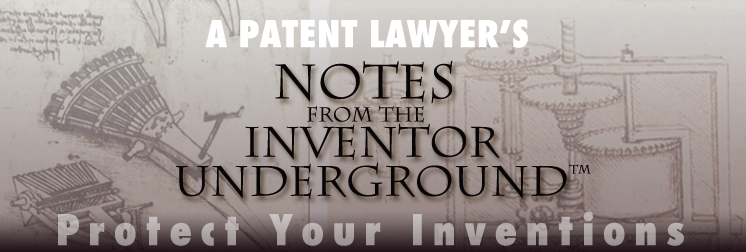
Avoiding Means-Plus-Function in the Up and Down World of Elevators
Patent and Technology trial lawyer Stan Gibson discusses how means-plus-function limitations can put patent holders at a disadvantage.
Mean-plus-function limitations in patent claims require special construction and can result in narrow patent claims that may not be beneficial to patent owners. As a result, many potential infringers will try to take advantage by claiming that certain terms in patent claims are in reality means-plus-function claims. The determination of whether certain terms in a patent are means-plus-function claims can have an important impact on the ultimate issue of infringement of the patent as well as the validity of the patent.
The Federal Circuit’s recent decision in a case involving patents pertaining to elevator systems highlights the importance of whether a claim limitation is considered a means-plus-function term. Inventio AG v. Thyssenkrupp Elevator Americas Corp., Case No. 2010-1525 (Fed. Cir. June 15, 2011).
In Inventio, the patents-in-suit involved modernizing a conventional elevator system. In the conventional elevator system, a passenger, at the boarding floor, presses an up or down button to board the elevator. When the elevator arrives, the passenger enters the elevator and then selects his or her desired floor. With the Inventio patents, the passenger, at the boarding floor, enters the desired floor instead of pressing an up or down button. The elevator system then sends an elevator to pick up the passenger and takes him or her to the selected floor. The patents disclose the back-end technology to make these modernized elevators function, including disclosing a “modernizing device” and a “computing unit” that interface with the floor terminal and the elevator to control or operate the elevator system.
On a summary judgment filed motion by the defendant, the district court construed the claim terms “modernizing device” and “computing unit” as means-plus-function claims and found that the written description of the patents failed to disclose corresponding structure to perform the recited functions. Accordingly, the district court granted summary judgment in favor of the defendant. On appeal, the Federal Circuit reversed, concluding that the terms were not means-plus-function limitations.
The Federal Circuit began its analysis by noting that §112, ¶6 “allows a patentee to express a claim limitation as ‘a means or step for performing a specified function without the recital of structure, material, or acts in support thereof,’ and the section provides that claim limitations expressed in this manner ‘shall be construed to cover the corresponding structure, material or acts described in the specification and equivalents thereof.’” The Federal Circuit noted that the use of the term “means” in a claim creates a rebuttable presumption that §112, ¶6 governs the construction of the claim term and, “[c]onversely, where, as here, the claim language dos not recite the term ‘means’ we presume that the limitation does not invoke §112, ¶6.” That presumption can be overcome if the defendant demonstrates that the claim term does not contain sufficiently definite structure or contains function without reciting sufficient structure for performing that function.
The Federal Circuit then stated that “[t]o determine the proper construction of a claim term, we look to the words of the claims themselves, the written description, the prosecution history, and any relevant extrinsic evidence.” The Federal Circuit also noted that “[i]n cases where the claims do not recite the term ‘means,’ considering intrinsic and extrinsic evidence is usually helpful, as the litigated issue often reduces to whether skilled artisans, after reading the patent, would conclude that a claim limitation is so devoid of structure that the drafter constructively engaged in means-plus-function claiming.”
Turning to the two claim limitations at issue, the Federal Circuit found that the term “modernizing device” presumptively contains sufficiently definite structure to those of skill in the art. The Federal Circuit based its reasoning on the claim language showing that the “modernizing device” functions as an electrical circuit that receives signals, processes signals, and outputs signals to other components in the patented system. The Federal Circuit also found that the written description supported the conclusion that the “modernizing device” is not a purely functional limitation because the written description depicted the modernizing device and its internal components, including the processor, signal generator, converter, memory, and signal receiver elements. Based on these conclusions, the Federal Circuit concluded that the claims and the written description demonstrated that the defendant had failed to overcome the presumption that the term “modernizing device” is not a mean-plus-function limitation.
With respect to the second claim limitation, “computing unit,” the Federal Circuit also concluded that the term connoted sufficiently definite structure. The Federal Circuit found that “[t]he claims recite that the computing unit is connected to the modernizing device and generates a destination signal for transmission to the modernizing device. . . . The claims elaborate that the computing unit is connected to the floor terminals of the elevator system, and evaluates incoming call reports, destination floors, and identification codes to generate the destination signal for processing by the modernizing device.” As with the “modernizing device,” the written description also connoted structure to one of skill in the art for the “computing device.” Indeed, the Federal Circuit cited numerous references to the written description, concluding that “the written descriptions refer to the computing unit as a computer, where one of its functions is to store and execute a computer program product.” The Federal Circuit therefore held that defendant had failed to overcome the presumption for this claim limitation as well.
Accordingly, the judgment of the district court was reversed and remanded for further proceedings consistent with the Federal Circuit’s decision.
* * *
The Federal Circuit’s opinion shows the difficulty in reading a mean-plus-function limitation into a claim that does not use the word “means.” Even though the claims at issue were very general and appeared to have little support, the Federal Circuit nonetheless concluded that there was sufficient disclosure and structure such that the defendant could not overcome the presumption against finding a means-plus-function limitation when the claim does not expressly use the word "means." Of course, the upside for a defendant, if it can overcome the presumption, is significant as such a strategy significantly increases the likelihood that the patent will be invalidated.
 Los Angeles Real Estate Litigation Lawyer Jeffer Mangels Butler & Mitchell LLP Home
Los Angeles Real Estate Litigation Lawyer Jeffer Mangels Butler & Mitchell LLP Home





